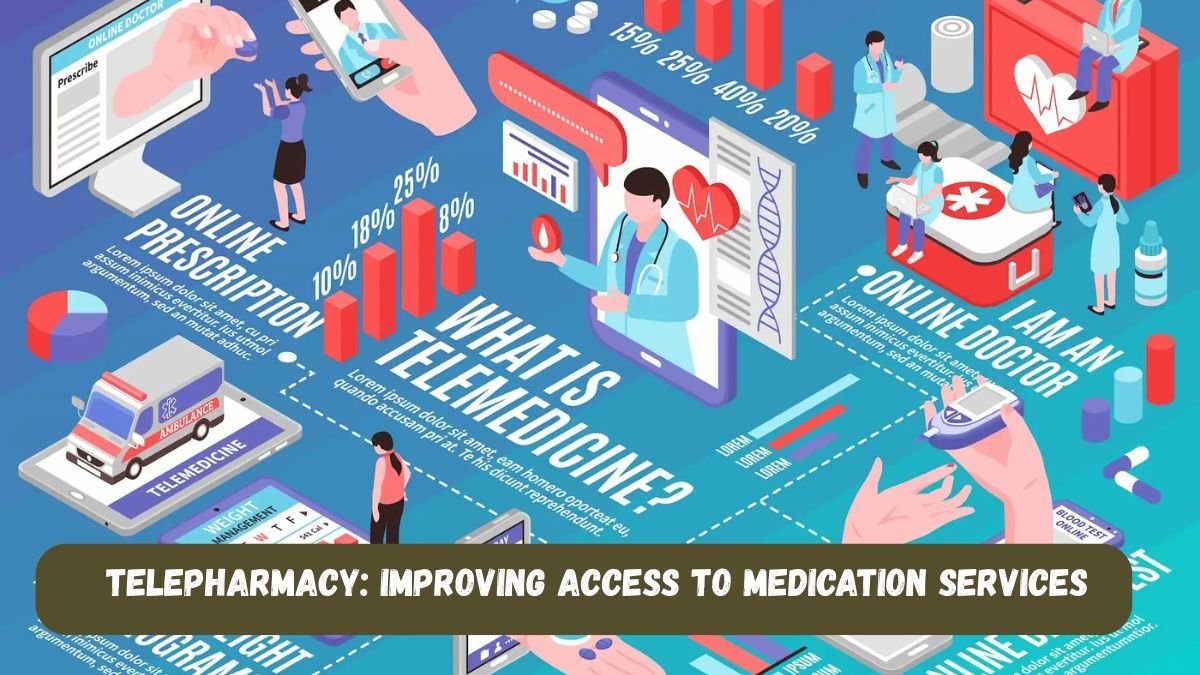Telepharmacy is an example of modern, digital healthcare that has completely transformed patients’ access to medicines and pharmacy services. In today’s rapidly changing healthcare environment, where everyone needs timely medication and treatment, telepharmacy has emerged as a vital solution. This system combines technology and healthcare, allowing patients to easily access their medicines and healthcare services from home or remote locations.
Why is the need for telepharmacy growing?
Equitable access to healthcare has become a challenge for everyone today. Especially in rural and remote areas, where access to hospitals and pharmacies is difficult, telepharmacy has brought new hope. Furthermore, the elderly, disabled, or those unable to travel can also access their medications and consultations through telepharmacy. This not only saves time but also brings equity and convenience to healthcare.
How Telepharmacy Works
Telepharmacy uses technology to establish a direct connection between the patient and the pharmacist. Patients can share their concerns through video calls, phone calls, or mobile apps, and pharmacists provide guidance on medications. Telepharmacy also utilizes electronic prescriptions, online medication delivery, and digital health records. This process eliminates the need for patients to repeatedly visit a physical clinic or pharmacy.
The Importance of Telepharmacy in Rural and Remote Areas
The lack of access to healthcare services has always been a major problem in rural areas. People living there often travel many kilometers to obtain medication and consult a specialist doctor. Telepharmacy offers a solution to this problem. Digitally purchasing medications and consulting with specialists saves patients both time and resources. This is why many governments and health organizations are emphasizing the digitization of rural healthcare services.
Benefits of Telepharmacy for the Elderly and Disabled
Telepharmacy has proven to be a boon for the elderly and physically disabled. They can receive their medications from home and consult with a doctor or pharmacist digitally. This reduces the need for them to visit the hospital and prevents disruptions in their regular medication regimen. Furthermore, they are also spared the fatigue and risk of frequent travel.
Improving the Quality of Healthcare
Telepharmacy is not only convenient but also enhances the quality of healthcare. Digital recording, accurate management of prescriptions, and online patient history tracking help pharmacists provide better and safer recommendations. This significantly reduces the risk of incorrect dosage and potential side effects.
Telepharmacy and the Challenges of the Pandemic
The COVID-19 pandemic further increased the need for telepharmacy. During lockdowns and social distancing measures, patients faced difficulties in visiting hospitals, but digital pharmacy services provided them with the convenience of receiving medications and consultations from home. This not only ensured the continuity of healthcare services but also reduced the risk of infection.
Technological Tools and Platforms
Several technological platforms and tools have been developed for telepharmacy. Patients and pharmacists can easily connect through mobile apps, web portals, and video consultation tools. These platforms often include features like e-prescriptions, order tracking, and reminders, which simplify and secure the patient experience.
Medication Availability and Distribution
One of the greatest advantages of telepharmacy is that it simplifies the availability and distribution of medications. Patients can order their medications digitally, and they are delivered to their homes. This eliminates the need to visit a pharmacy to pick up their medication, and patients can receive their medications on time.
Challenges of Telepharmacy
Although telepharmacy has made healthcare easier, it also comes with some challenges. Lack of technical infrastructure, lack of digital literacy, and internet connection issues can create barriers in some areas. Furthermore, data security and patient privacy are crucial. Continuous improvement and awareness are needed to overcome these challenges.
Future Directions and Prospects
The future of telepharmacy is bright and full of promise. As technology advances, this service is becoming more comprehensive, secure, and accessible. In the future, artificial intelligence and machine learning will enable recommendations based on dosage, potential side effects, and patient-specific needs. This will make telepharmacy not just a convenience, but a revolutionary change in healthcare.
Conclusion
Telepharmacy has established a new dimension in the world of healthcare. It not only allows patients to connect with medicines and pharmacists, but also saves time, resources, and improves the quality of healthcare. It is especially beneficial for rural areas, the elderly, and the disabled. As technology advances in the future, telepharmacy will make healthcare services more accessible and effective.
